Best Rust Programming Books to Buy in December 2025
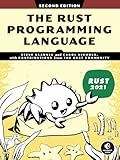
The Rust Programming Language, 2nd Edition


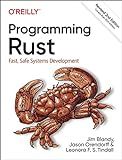
Programming Rust: Fast, Safe Systems Development


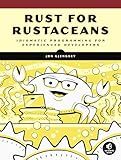
Rust for Rustaceans: Idiomatic Programming for Experienced Developers


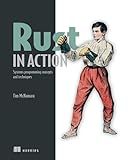
Rust in Action


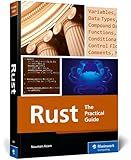
Rust Programming: A Practical Guide to Fast, Efficient, and Safe Code with Ownership, Concurrency, and Web Programming (Rheinwerk Computing)


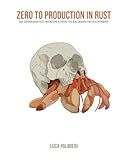
Zero To Production In Rust: An introduction to backend development


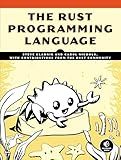
The Rust Programming Language


In Rust, you can create a map of strings to functions using a HashMap. First, you need to define the functions that you want to map to the strings. Then, you can create a HashMap where the keys are strings and the values are function pointers or closures. Here is an example of how you can achieve this:
use std::collections::HashMap;
fn function1() { println!("Inside function1"); }
fn function2() { println!("Inside function2"); }
fn main() { let mut map: HashMap<String, fn()> = HashMap::new(); map.insert(String::from("func1"), function1 as fn()); map.insert(String::from("func2"), function2 as fn());
let key = "func1";
if let Some(func) = map.get(key) {
func();
}
}
In this code snippet, we define two functions function1 and function2. We then create a HashMap called map where the keys are strings and the values are function pointers. We insert the functions into the map using their corresponding keys.
In the main function, we retrieve the function for the key "func1" from the map and call it. This way, we can map strings to functions in Rust using a HashMap.
How to create a map of strings in Rust?
In Rust, you can create a map (also known as a hashmap) of strings using the HashMap data structure from the standard library. Here is an example of how to create a map of strings in Rust:
use std::collections::HashMap;
fn main() { let mut string_map = HashMap::new();
// Adding key-value pairs to the map
string\_map.insert(String::from("key1"), String::from("value1"));
string\_map.insert(String::from("key2"), String::from("value2"));
string\_map.insert(String::from("key3"), String::from("value3"));
// Accessing values in the map
match string\_map.get("key1") {
Some(value) => println!("Value for key1: {}", value),
None => println!("Key not found"),
}
}
In this example, we first import the HashMap data structure from the std::collections module. We then create a new hashmap called string_map using the HashMap::new() function.
We add key-value pairs to the map using the insert method, where the keys and values are both of type String.
To access a value in the map, we use the get method with the key of the value we want to retrieve. The get method returns an Option enum, which we can match on to retrieve and print the value if it exists.
What is the best use case for using a map in programming?
One of the best use cases for using a map in programming is for storing key-value pairs, where each key is unique and maps to a specific value. Maps are commonly used in situations where fast and efficient lookups or updates of values are needed, such as caching data, maintaining configuration settings, creating indexes for quicker data retrieval, or implementing associative arrays. Maps can also be used to represent relationships between different entities or to store data that needs to be organized in a certain way. Overall, maps can be a versatile and powerful data structure for a wide range of programming tasks.
How to update values in a HashMap in Rust?
In Rust, you can update values in a HashMap by using the entry method along with the and_modify function. Here is an example:
use std::collections::HashMap;
fn main() { let mut map = HashMap::new();
map.insert("key1", 1);
// Update value if key exists, otherwise insert new key-value pair
map.entry("key1").and\_modify(|value| \*value += 1).or\_insert(0);
map.entry("key2").and\_modify(|value| \*value += 1).or\_insert(0);
println!("{:?}", map); // Output: {"key1": 2, "key2": 0}
}
In this example, the and_modify method is used to update the value associated with "key1" by incrementing it by 1. If the key does not exist in the HashMap, the or_insert method is used to insert a new key-value pair with the value of 0.
What is the advantage of using a map over other data structures in Rust?
One advantage of using a map over other data structures in Rust is that maps provide a way to store key-value pairs, making it easy to look up values based on a specific key. This can be useful for tasks such as storing and retrieving data, creating lookup tables, or implementing hash tables. Maps in Rust are implemented using hash maps, which provide efficient access times for adding, updating, and retrieving values. Additionally, maps in Rust are generic data structures that can store keys and values of any data type, making them versatile and adaptable to a wide range of use cases. Overall, using a map in Rust can provide a convenient and efficient way to store and manipulate key-value data.
What is the purpose of creating a map in programming?
Creating a map in programming is important for storing key-value pairs in an organized and efficient manner. This allows for quick and easy retrieval of values associated with specific keys, making data processing more efficient. Maps can be used to store data like user preferences, settings, and configuration options, as well as for implementing algorithms like graph traversal and sorting. Overall, maps help programmers manage and access data more effectively, improving the performance and readability of code.
How to create a mapping between strings and functions in Rust?
In Rust, you can create a mapping between strings and functions using a HashMap. Here's an example code snippet demonstrating how to create a mapping between strings and functions:
use std::collections::HashMap;
// Define the function signatures fn function1() { println!("Function 1"); }
fn function2() { println!("Function 2"); }
fn main() { // Create a HashMap to store mappings between string keys and function pointers let mut function_map: HashMap<&'static str, fn()> = HashMap::new();
// Insert mappings into the HashMap
function\_map.insert("function1", function1);
function\_map.insert("function2", function2);
// Retrieve and call the function based on the key
if let Some(func) = function\_map.get("function1") {
func();
}
if let Some(func) = function\_map.get("function2") {
func();
}
}
In this code snippet, we defined two functions function1 and function2, and created a HashMap function_map to store mappings between string keys and function pointers. We then inserted the function mappings into the HashMap and retrieved and called the functions based on the keys.
